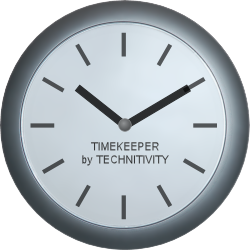The way I like to write (and the way I believe books should be written, in spite of the fact that I'm no authority on this whatsoever) is to build the book up in layers with increasing levels of detail.
The concept of "level of detail" (or LOD for short) comes from the computer graphics industry. In the words of the great and wise philosopher Wick E. Pedia, it "involves decreasing the complexity of a 3D object representation as it moves away from the viewer or according to other metrics such as object importance, viewpoint-relative speed or position."
And here is a graphical representation:

In short: if you can't appreciate the detail, don't waste time and resources creating the detail.
Same thing with a story. Start with a synopsis or an outline. Don't start with a finished manuscript. If you begin with a short version of your complete story then you can see if it's going to be worth spending any more time on. In a thousand words or so, can you see your beginning, middle, and the all-important end? Are your protagonist's motivations clear and believable? Is your antagonist the perfect foil? Do you have conflict? A good climax, twist or reveal to reward your faithful readers for their time invested?
If you don't have all that in the synopsis, it's very unlikely your completed manuscript will magically have them.
So that's what I attempted to do this time. Except instead of writing a one-thousand word synopsis, I wrote a fifty-thousand word synopsis. But it only took ten days, and in truth, the one-thousand word version would have taken about the same amount of time.
But when I started on that second LOD pass, I jumped right to the 60,000 polygon version of Beethoven. I lied to myself saying, "No, this is important. I just have to nail this first chapter in full detail, to properly set the manuscript in motion." And in hindsight, I was both right and wrong. I'm happy I did that, but no, it wasn't necessary.
That being said, I was able to nail down one very, very important decision: the point of view. I began writing the story in third-person limited point of view. However, I finished the last 16,000 words or so in first person. This was a NaNo-related device to help me zoom to the end of the story more quickly. I called it "campfire mode", in that the protagonist, now hypothetically old and sitting around a campfire, recounts her story to a gathering.
Then I realized: I like that. So I experimented by writing two versions of the opening chapter, one in first person, the other in third. At first, first person view slightly edged out third person. But then something struck me I didn't see coming: a prologue. It sat outside the story, in the form of a letter written by the protagonist in her later years, but then it hit me: this was the perfect "cover letter" accompanying a memoir. That sealed the deal: first person it was.
And with that, PBWQ 2014 is now two-thirds done. October went well. November went even better. And, as silly and pointless as it may be, I'm going to post this anyway:

 |
 |
 |


This is helpful. I get bogged down in a number of details about my characters before I should ("does she have freckles? Why would someone have freckles? What do freckles really say to us? Are freckles the sign of the antichrist or just pigmentation?")
hahaha. Freckles.